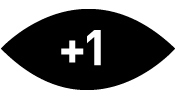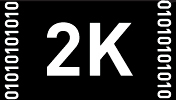

The third of the Bogie and Becall quadrilogy, Dark Passage is a shrewd adaptation of David Goodis’s novel by director Delmer Daves (Broken Arrow, 3:10 to Yuma, A Summer Place). Bogart stars as Vincent Parry, a man wrongly convicted of murdering his wife, who breaks out of San Quinton and goes on the lamb. Bacall plays Irene Jansen, a beautiful stranger (at least she seems to be a stranger at first) who offers Parry shelter in her apartment while he tries to clear his name. Parry gets plastic surgery to transform himself into someone the police won't recognize. However, since he's not quite the cool customer we expect of a Bogart character, his fear and insecurity continue to mark him as suspicious.
The savvy conceit of Daves' screenplay is to obscure Bogart's iconic mug from the audience for more than half the picture. At first, this is done via shadows and clever use of subjective point of view. Later his face is encased in bandages. Vincent Parry talks like Humphrey Bogart, but when we see his picture in the paper he's a far younger, far less interesting-looking guy. It's not until the bandages come off that we, along with Parry and Jansen, see the Bogart we all know. This structure in which the star's signature look is withheld for so long differentiates this from any other film noir. This same year, Robert Montgomery filmed an adaptation of Raymond Chandler’s Lady in the Lake, in which Montgomery played the famous private detective Phillip Marlowe (forever embodied by Bogart in the previous year's The Big Sleep). Montgomery shot the entirety of his Lady in the Lake from Marlowe's viewpoint, which renders the entire film a laboured gimmick that never credibly feels like you're watching something unfold through a human POV. But the first-person perspective is employed judiciously in Dark Passage; sometimes to comic effect, sometimes to ratchet up the tension, and sometimes so that Bacall's deep, penetrating, yet understanding eyes are staring right at the viewer.
All of this works well, but the real thrill is the power of Bacall's performance. This is a somewhat different character from the sultry, preternaturally self-confident characters of her prior pictures. Irene Jansen is still very much a woman who knows what she wants and is often a few steps ahead of everyone else, but her motivations here are less playful. She involves herself with Parry for reasons that have little to do with self-amusement. The heat generated between her and Bogart is no less palpable here than in their first two pictures, even though he's often not visible or encased in bandages. These two stars have amazing chemistry no matter what barriers are between them, which makes this film's somewhat standard payoff intensely satisfying.
Daves's shrewd adaptation of Goodis’s novel obscures Bogart's iconic mug under bandages for the first half of the story maintaining the heat between Boggie and Bacall while avoiding the gimmicky feeling of Lady in the Lake.








